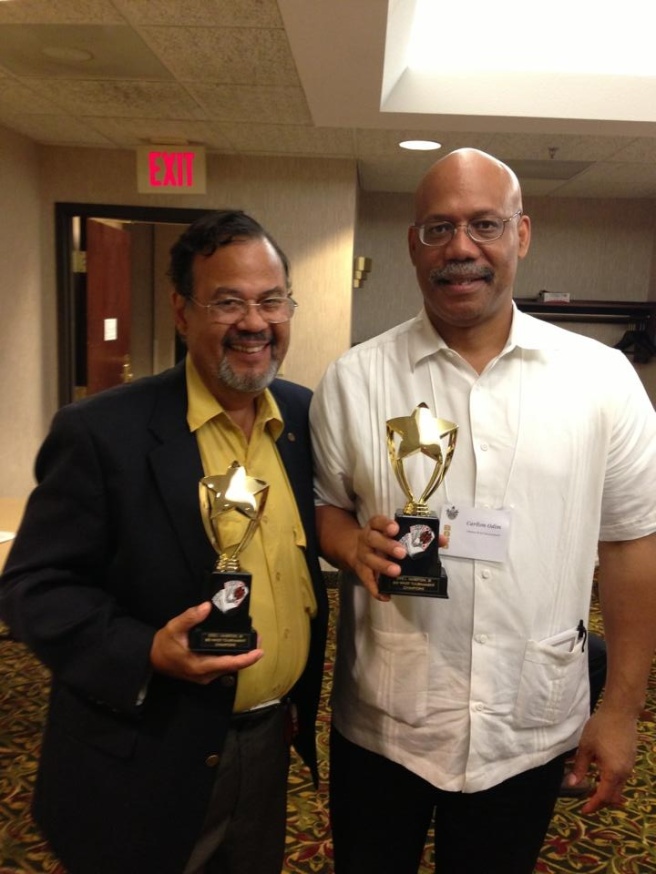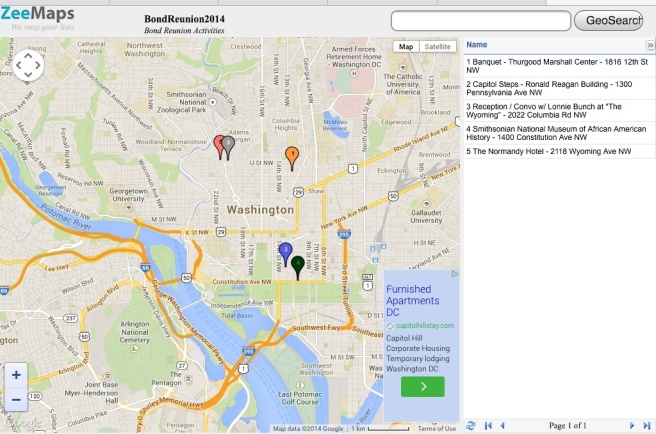Here are three “civil rights” related exhibits available at the Library of Congress and the Newseum. The Library of Congress is free; the Newseum is not.
See below!
At the Library of Congress now (free):
1. A Day Like No Other: Commemorating the 50th Anniversary of the March on Washington
Now–August 30, 2014
This exhibition transports visitors to the momentous day of the March on Washington for Jobs and Freedom, August 28, 1963—a day that transformed our nation—when 250,000 people from all walks of life participated in the largest non-violent demonstration for civil rights that Americans had ever witnessed.
Exhibition Location
Graphic Arts Galleries, Ground Floor, Thomas Jefferson Building
At the Newseum now (not free):
“1964: Civil Rights at 50”
On display through 2014
2. Make Some Noise
“Make Some Noise” explores the new generation of student leaders of the civil rights movement who exercised their First Amendment rights and fought segregation in the early 1960s.
“1964: Civil Rights at 50” is a yearlong exhibit that chronicles the EVENTS of a dramatic year in the civil rights movement, including Freedom Summer, “Mississippi Burning” and the passage of the Civil Rights Act of 1964.
Explore an exclusive collection of photographs by photojournalist Ted Polumbaum, who captured powerful images of Freedom Summer, a bold campaign organized by civil rights groups in 1964 to REGISTER black voters in Mississippi. From volunteer training sessions to clashes with segregationists, Polumbaum’s photos reveal the passion for social justice that led him to Mississippi in the summer of 1964. The Polumbaum photographs are part of
more than 200,000 of his images donated to the Newseum’s permanent collection by his widow, Nyna Brael Polumbaum in 2003.
Media Coverage
3. Civil Rights at 50
“Civil Rights at 50,” a three-year changing exhibit, chronicles milestones in the civil rights movement from 1963, 1964 and 1965 through historic front pages, magazines and news images.
In time for the 50th anniversary of the March on Washington, the Newseum will open “Make Some Noise: Students and the Civil Rights Movement,” an exhibit that explores the new generation of student leaders in the early 1960s who fought segregation by making their voices heard and exercising their First Amendment rights.
The exhibit will feature a section of the original F.W. Woolworth lunch counter in Greensboro, N.C., where in 1960 four African-American college students launched the sit-in movement by refusing to leave their counter stools after being denied service in the whites-only section.
“Make Some Noise” will spotlight key figures in the student civil rights movement, including John Lewis, now a U.S. representative from Georgia, and Julian Bond, who later became chairman of the NAACP. Through the Student Nonviolent Coordinating Committee, the young activists took direct action to end segregation and break down racial barriers in voting rights, EDUCATION and the workplace by organizing sit-ins, marches and voter registration drives.
The exhibit also will feature a bronze casting of the Birmingham, Ala., jail cell door behind which civil rights leader the Rev. Martin Luther King Jr. penned his famous “Letter From Birmingham Jail” in 1963.
In addition to “Make Some Noise,” the Newseum will launch a three-year changing exhibit, “Civil Rights at 50,” which will be updated each year to chronicle milestones in the civil rights movement from 1963, 1964 and 1965 through historic front pages, magazines and news images. “Civil Rights at 50” will be on display through 2015.
Building on our popular civil rights movement classes, the Making a Change learning module, launching Aug. 30, 2013, uses the Newseum’s expertise to present a fresh, unique perspective on this topic by examining the role of the press and the First Amendment throughout the movement.
This free resource on the Newseum’s Digital Classroom will explore the civil rights movement through the lenses of historical connections, media literacy and civics & citizenship. Videos, primary source news footage and interviews, archival photographs, historical newspapers and multimedia interactives will bring the content to life and standards-aligned lesson plans will help teachers reach their learning goals.



